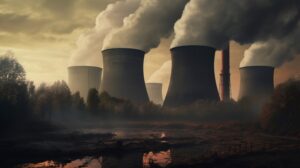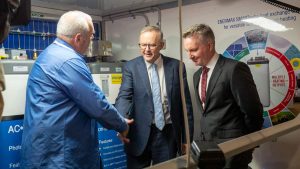This weekend, the Moorburg coal plant will go into operation just outside of Hamburg – finally. Though it may be misunderstood abroad as a sign that the Energiewende apparently needs coal power to back up renewables, the real story is that renewables are making coal power redundant even during the nuclear phaseout. How else to explain that Vattenfall would have preferred to back away from the project altogether?
 Tomorrow, a new 800 MW hard coal plant will go into operation in Hamburg, Germany. In fact, the plant should have gone online already. It has taken nearly 10 years to finish, whereas a more normal timeframe would have been five or six years. Last year, it briefly generated its first electricity during tests, but various setbacks lead to additional delays.
Tomorrow, a new 800 MW hard coal plant will go into operation in Hamburg, Germany. In fact, the plant should have gone online already. It has taken nearly 10 years to finish, whereas a more normal timeframe would have been five or six years. Last year, it briefly generated its first electricity during tests, but various setbacks lead to additional delays.
The story is much more interesting, but we don’t have the space for it here (if you read German, here is a wonderful overview). Suffice it to say that energy markets were a different planet in 2006. As I explained last fall, coal companies were flooded with liquidity at the time (windfall profits from emissions trading), and they doubted that renewables could do the job. This year alone, Germany will probably add a gigawatt of offshore wind after installing nearly 500 MW last year, and another gigawatt is in the pipeline. More than four gigawatts was added on shore last year. The PV target for 2050 was met in 2012. This coal plant is not needed.
Vattenfall and its CEO agree (report in Swedish). The company tried to back away from the plant a few years ago but realized it had already invested too much money. And in 2011, Hamburg lost three nearby nuclear plants during Chancellor Merkel’s phaseout, which should have taken some nails out of Moorburg’s coffin. But then, the country continue to roar ahead with wind, solar, and biogas.
Naturally, the wind and solar cannot be switched on like the biogas and coal plants can, but dispatchable fossil capacity is being squeezed out. While the world continues to report that Germany is adding coal plants, these facilities generate less and less coal power. Last year, electricity from hard coal was down significantly. Germany is getting less MWh from more MW of coal plants.

On the occasion of the opening of this plant, Lichtblick – Germany’s largest provider of 100 percent green electricity (also based in Hamburg) – published the results of a survey (press release in German) showing that 67 percent of Germans want a coal phaseout. Only 17 percent of those surveyed support the expansion of coalfields.
To its credit, Vattenfall thought it was building not only a coal plant that was needed, but also one that is highly efficient. The average coal plant in Germany has an efficiency below 40 percent, whereas Moorburg easily reaches 45 percent. But the original plan was to recover so much waste heat with a connection to a district heat network serving the city of Hamburg that overall efficiency might have exceeded 60 percent. Citizens of Hamburg, who opposed the plant altogether, rejected the connection of their district heat network to the new coal plant in the hopes that the plant would be stopped altogether.
In the end, we end up with the worst of all possible worlds: a coal plant that is a quarter less efficient than it could have been and unlikely to produce enough electricity to pay for itself anyway. The upside is that Hamburg now has a gigantic coal plant that is not only relatively efficient, but also ramps up and down quite well for a coal plant. And it will be on hand to restart the grid after a blackout – if Germany ever gets one.
Source: Renewables International. Reproduced with permission.









